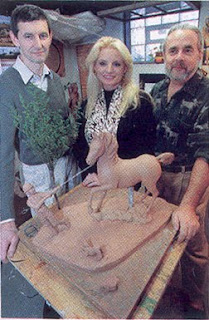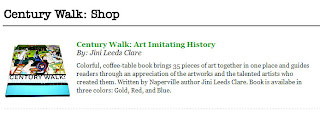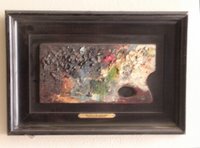Horse Market Days

Ten years ago,
Pamela Carpenter,
Robert Buono,
and Torsten Muehl
(all members of the P&C at that time)
collaborated on
"Horse Market Days",
a sculptural tableaux
for the Naperville Century Walk

The finished piece
is located
at Aurora Avenue
and Webster Street.

and the book
that records
this spectacular display
of public art
can be purchased here




















